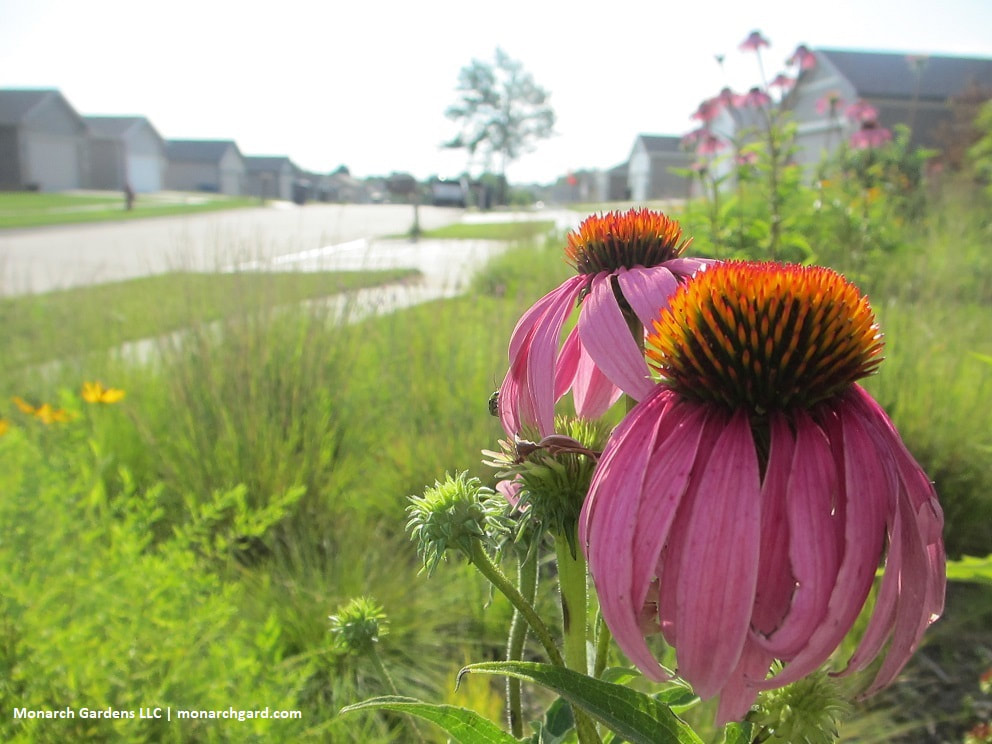I'll say two things first: 1) I'd rather see a garden of coneflower cultivars than lawn or daylilies and 2) I have intense respect for the work Mt. Cuba does. We'd be in the dark without Mt. Cuba, yet this trial is just one preliminary, necessary step forward and not a final clear-cut answer.
If you don't know, the Echinacea trial evaluated coneflowers in the mid-Atlantic based primarily on garden performance -- how the plants grew, looked, and lasted. However, one issue regarding pollinators really stands out to me: the trial noted the number of adult pollinators visiting the blooms of cultivars, and used this to say which would be of best value to adult pollinators. This doesn't fly (pun intended) for a few reasons:
1) What species were visiting the blooms and how were they using the blooms? Until we have these answers we can't even begin to understand value or benefit or what's occurring in the ecosystem. There are nuances to nectar and pollen use, as well as life cycles and habits of various pollinator species, that help us get a much more complete picture of what's going on. I'd also like to know what pollinator species were showing floral fidelity.
2) What is the chemical and nutritional make up of the nectar and pollen? What amino acids (nectar) are being provided and what's the protein content (pollen)? Sure, it may very well be a cultivar is providing something a straight species can't -- or vice versa. There's also the nuance of these things being affected by climate, ecoregion, etc.
3) What's happening to UV markings on petals that plants use to communicate with adult pollinators? What about aromas? What about electromagnetic fields?
4) Tallamy's study a few years back on woody cultivar larval hosts indicated that changes to leaf color (leaf color effects larval host ability), specifically purple, greatly reduces larvae -- whereas variegation doesn't. Dr. Annie White looked at adult pollinators and flowers (species and cultivars) on herbaceous perennials and found mixed results on her preliminary study, but species plants had the edge. We know double-flowered coneflowers are terrible. However, I still wonder if, by selecting over and over for one trait (bloom color), we're creating a loss of genetic diversity that may translate into increased chances for something to be amiss in the foliage for larvae.
There's still so much we don't understand, especially on a region by region basis. Certainly, I also don't want to see these cultivars placed anywhere near remnant ecosystems that harbor straight species Echinacea, either (which would be my house). To fully understand the above issues will require a significant amount of resources we probably won't ever have; but I think it's as problematic for folks to say something like "see, when we manipulate plants it's all good and may even be better for wildlife" as it is for someone like me to say "we should always use straight species natives no matter what everywhere, every time, period."
And I still believe we can't have this conversation without also considering how we manipulate plants for commercial gain and / or to please the aesthetic desire of one dominate species, along with the messy ethical implications behind human supremacy that readily colonizes plant culture. But I wrote a book on that.



 RSS Feed
RSS Feed

